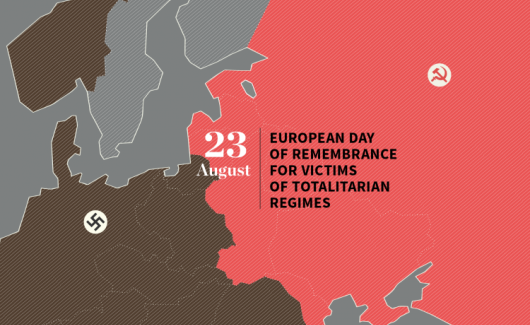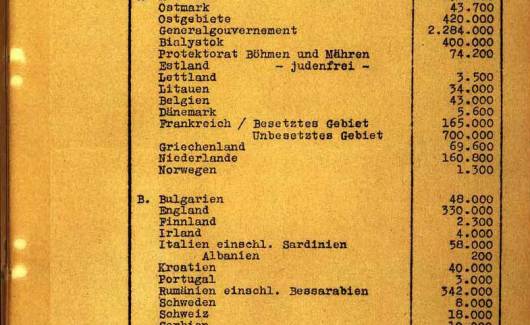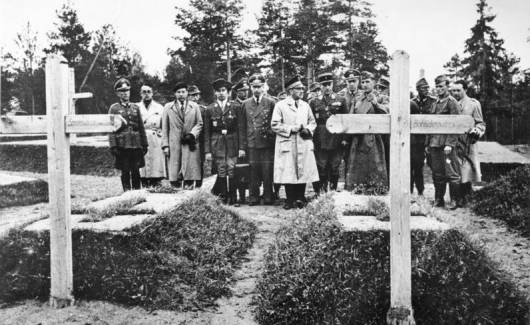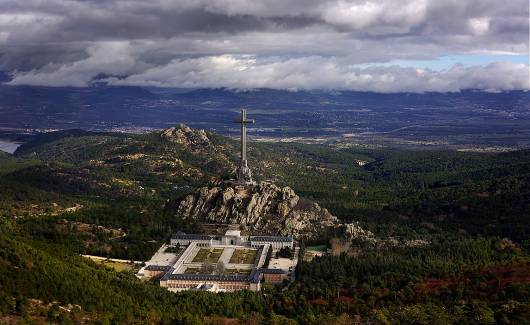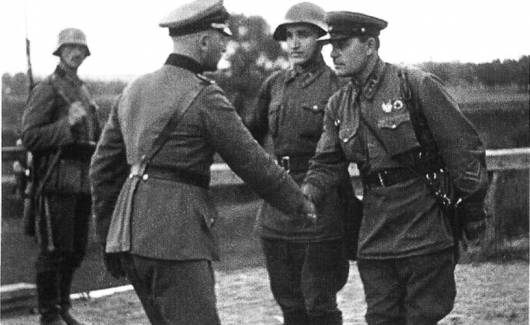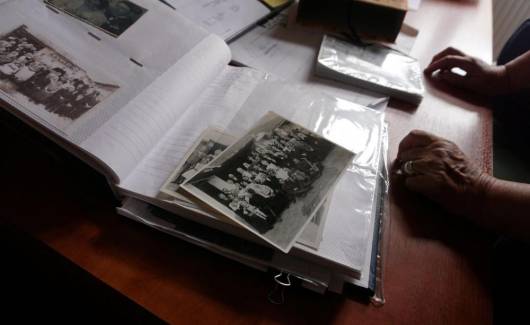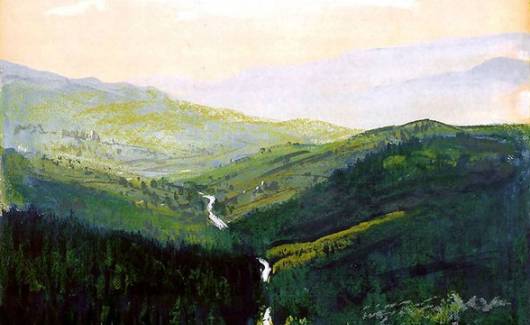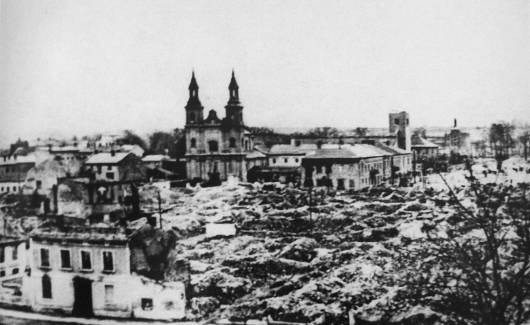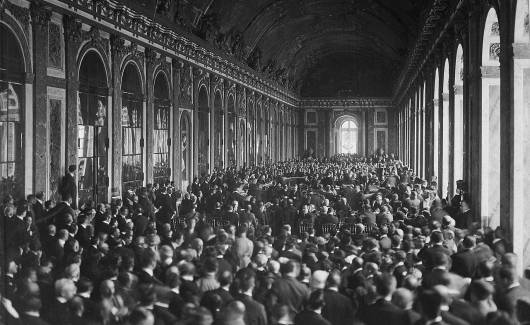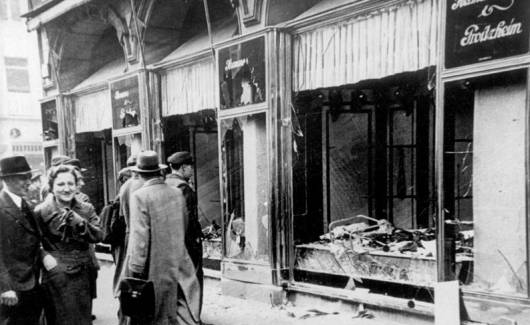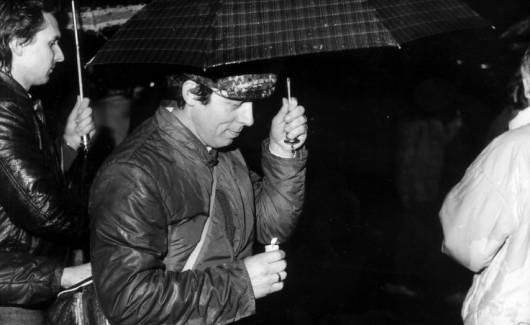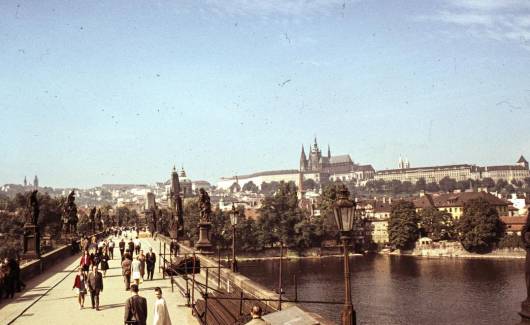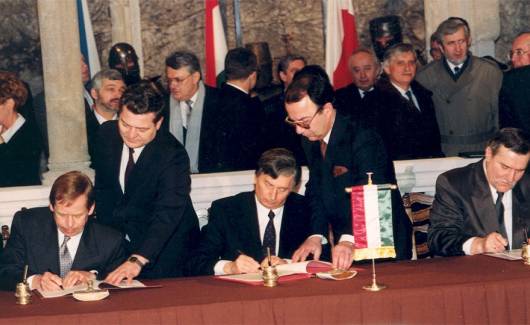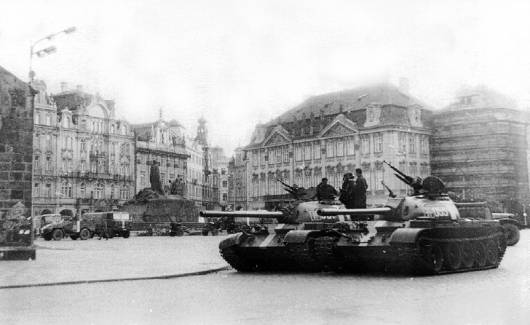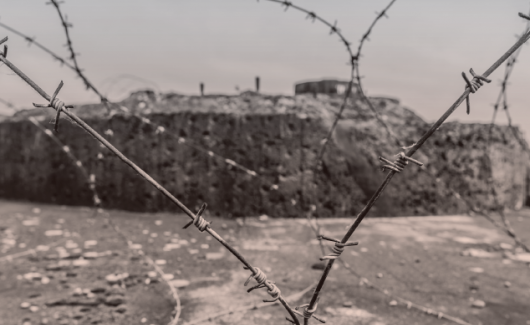ABSTRACT
The article examines how memory of past violence is remediated online and how
its remediation interacts with contemporary collective traumas in post-socialist
countries. For this purpose, it examines how a single episode of the Second World
War – the Battle of Kyiv of 1943 – is represented and interacted with on Wikipedia.
Using web content analysis, the article traces the evolution of narratives
of past violence in different language versions of the encyclopedia and explores
how the current conflict in Ukraine affects the refashioning of Second World
War memory in digital media.
Remediating violence: Second World War memory on Wikipedia
The impact of remediation – that is, the process of refashioning existing
media formats in new media (Bolter and Grusin 1999, 45) – on individual
and collective remembrance is one of the trending subjects in the field of
memory studies.1 Mass media play a key role in representation of the present
and the past alike, as the German sociologist Niklas Luhmann noted
(Luhmann 2000, 102). Instead of being ‘passive and transparent conveyors
of information’ (Erll 2008, 3), they set the agenda for current and future
acts of remembrance and determine how the past is represented and understood.
Consequently, the transition of memories between different media
has significant impact on the dynamics of remembrance, which, as memory
scholars Astrid Erll and Ann Rigney note, is increasingly dependent on media
technologies and circulation of media products (Erll and Rigney 2009, 3).
The growing interest towards remediation of memory has resulted in a number
of academic works that examine interactions between digital media and
traumatic memories in the post-socialist states.2 The importance of this
particular area is related to the disproportionate politicization of culturalremembrance that leads to frequent ‘memory wars’ (Blacker, Etkind and
Fedor 2013) among the regional actors as well as the significant impact of
digital media on transformation of the local memory landscape (Rutten and
Zvereva 2013). Remediation of the traumatic past – in particular, Second
World War memory – has also became intertwined with media coverage of
the Ukraine crisis, which started in 2013 with anti-government protests in
Kyiv that led to the ousting of President Viktor Yanukovych in 2014, followed
by the annexation of Crimea by Russia and the conflict between the
Ukrainian government and pro-Russian insurgents in Eastern Ukraine, often
known as the war in Donbass. A number of scholars (Gaufman 2015; Siddi
2017) note extensive use of Second World War memory for explaining and
interpreting the crisis on mainstream and digital media. However, until now
the impact of current collective traumas, such as the war in Donbass, on
the remediation of past violence in the region remains remains a pressing
but understudied subject.
The article addresses this shortcoming by examining how a single Second
World War episode – the Battle of Kyiv of 1943 – is represented and interacted
with on Wikipedia. Not only is this episode an important milestone in
the Second World War, it is also a recurring source of historical controversy
between Ukraine and Russia. By exploring how traumatic memories of this
event are conveyed on Wikipedia, which is both the world’s largest online
encyclopedia and one of the most popular websites in the post-socialist
space,3 this article strives to trace the evolution of narratives of past violence
online and to explore how the current conflict in Ukraine affects the
remediation of Second World War memory in the post-socialist countries.
Wikipedia and cultural memory: literature review
Remediation of war memories is not a recent phenomenon and can be
traced back at least to the middle of the 19th century, when the media coverage
of wars and conflicts was increasingly adapted for mass consumption
(Keller 2001, 251). The development of information and communication
technologies led to the intensification of this process in 1960s and 1970s,
when it brought a ‘memory boom’ (Winter 2011) that transformed Second
World War memory, in particular Holocaust remembrance. A few decades
later, as media scholars Andrew Hoskins and Ben O’Loughlin argue, the
distribution of digital technologies resulted in a new memory boom that
radically changed the remembrance of contemporary conflicts (Hoskins and
O’Loughlin 2010, 131). Not only did they enable ‘a far greater intensive andextensive connectivity’ between the forms, agents and discourses of memory
(Hoskins 2009, 40), but they also opened up new possibilities for memory
production and circulation, distinguished by low costs and a potentially high
impact (de Cesari and Rigney 2014, 12).
The digital memory boom affected not only recent traumatic memories, but
also the ones that have already experienced the process of memorialization
in the pre-digital time. A number of studies suggest that the distribution
of digital commemorative practices has had a significant impact on the remembrance
of conflicts, such as the Second World War.4 The consequences
of the remediation of older memories of violence through digital media
remain, however, a subject of scholarly debate. The existing works offer
contrasting assessments that vary from the formation of more inclusive
narratives of conflicts that challenge hegemonic interpretations of the past
(Trubina 2010) to the propagation of mutually exclusive interpretations
of traumatic historical episodes that ignite disagreements between their
adherents (Nikiporets-Takigawa 2013).
Wikipedia is one of the digital platforms, the impact of which on collective
remembrance is widely recognized both in post-socialist countries and
worldwide. Christian Pentzold, a German communication scholar, argues
that production of Wikipedia articles can be viewed as process of the
‘discursive construction of the past’, which involves a transition from communicative
memory that is debated on the encyclopedia’s discussion pages
to cultural memory that takes the form of encyclopedia’s articles (Pentzold
2009, 264). A number of studies argue that the platform can be viewed
as a transnational space that facilitates the production of a fundamentally
pluralistic historical knowledge (Hardy 2007), or as a digital forum that
sustains consensus-building vis-à-vis contentious pasts (Dounaevsky 2013).
Yet others theorize the site as an online platform that enforces hegemonic
memory narratives (Luyt 2011) or a mnemonic battleground on which different
views of the past clash (Rogers and Sendijarevic 2012).
The interactions between Wikipedia and Second World War memory in the
post-socialist space has attracted significant scholarly attention in the recent
years;5 however, the existing assessments of the encyclopedia’s impact on
war remembrance in the area paint different pictures. Helene Dounaevsky,
a communication scholar, argues that Wikipedia facilitates creation of ‘a special
type of historical knowledge’ which is characterized by uncertaintyand polyphonism that challenge hegemonic interpretations of the Second
World War (Dounaevsky 2013). By contrast, an interdisciplinary team of
researchers demonstrates in their study of Stepan Bandera, a leader of the
Ukrainian nationalist movement in 1940s and 1950s, that different versions
of the encyclopedia tend to transmit local narratives of Second World War
(Fredheim, Howanitz and Makhortykh 2014), thus promoting a ‘linguistic
point of view’ of the past (Massa and Scrinzi 2013). The current study attempts
to investigate further the platform’s impact on the complex memory
landscape of the region and examine how its interaction with Second World
War memory is affected by the ongoing Ukraine crisis.
Battle of Kyiv: historical background
In autumn 1943, Soviet troops approached Kyiv, the former capital of Soviet
Ukraine, which was seized by the Germans two years earlier. At the end
of September, Soviet units managed to capture a number of bridgeheads
on the German-controlled right bank of the River Dnieper; the largest of
those were the Lyutezh and Bukrin bridgeheads. In the weeks that followed,
the Red Army made several attempts to seize the city; however, none of
them were successful, due to the heavy losses sustained while crossing the
River Dnieper and the difficult terrain on the right bank. Soviet losses were
particularly high at the Bukrin bridgehead, originally envisioned as a primary
bridgehead for capturing Kyiv.
The unsuccessful October operations led the Soviet High Command to
relocate Soviet forces to the Lyutezh bridgehead, from where a massive
offensive was staged on 3 November. This operation was preceded by another
attack from the Bukrin bridgehead on 1–2 November; according to
the Ukrainian historian Victor Korol, this distracting manoeuvre resulted
in huge losses among Soviet ranks (Korol 2003). The rapid advancement
of the Soviet troops from the Lyutezh bridgehead, however, proved to be
unexpected for the German command and on the morning of 6 November –
the anniversary of the October Revolution and the most important state
holiday in the Soviet Union – Soviet forces recaptured the Ukrainian capital.
The successful actions of the Red Army during the Battle of Kyiv had
a profound impact on the course of the war. The capture of Kyiv led to
the destabilization of the German front and a rapid Soviet advance in 1944;
furthermore, it had great ideological significance, and was used to the fullest
by Soviet propaganda (Shulzhenko and Tykhonenko 2013). The propaganda, however, omitted the high losses suffered by the Red Army, estimations of
which vary from 133,000 (Gorelov and Grutsyk 2013) to 270,000 (Levitas
2012) dead and wounded. Today, however, a number of Ukrainian scholars
argue that the high death toll was a consequence of the Soviet High
Command’s intent to liberate Kyiv for the anniversary date of the October
Revolution (Korol 2005, 22), which spurred the massive mobilization of
Ukrainian men who were often sent to battle unprepared and – according
to a few testimonies – insufficiently armed (Koval 1999, 95–96).
After the end of the war, the Battle of Kyiv quickly became an integral part
of the Great Patriotic War myth, which would later be instrumental in the
creation of a common public identity in the Soviet Union. During the Khrushchev
period, 6 November became an official holiday – the Day of the Liberation
of Kyiv – and the actions of the Red Army were unequivocally praised
in Soviet historiography (Hrynevych 2005). A number of monuments commemorating
the battle appeared in Kyiv in the post-war period; however, the
majority of them were dedicated to the Soviet High Command, whereas the
sacrifices of rank-and-file soldiers remained largely ignored. While in the late
1970s a few monuments dedicated to ordinary soldiers appeared in the Ukrainian
capital, these monuments usually commemorated soldiers who were
fighting at the Lyutezh bridgehead; in contrast, the Bukrin bridgehead, where
the bloodiest clashes took place, remained forgotten (Makhortykh 2014).
While in Ukraine the annual Soviet-style celebration of the liberation of Kyiv
continued after the dissolution of the Soviet Union, a number of Ukrainian
scholars (Ginda 2010; Korol 2003; Koval 1999) started questioning existing
interpretations of the event. The revision of the Soviet narrative made it
possible to integrate those traumatic memories that had been left out of the
glorious story of the liberation into the public discourse of the Second World
War; yet, a number of scholars note that the rewriting of history in Ukraine
led to the formation of new myths, which emphasized the martyrdom of
the Ukrainian people (Jilge 2008; Portnov and Portnova 2010). In the case
of the Battle of Kyiv, this shift toward ‘competing victimhood’ (Jilge 2008)
resulted in the deglorification of the event and the propagation of a view
of the battle as a Soviet crime against the Ukrainian people (Korol 2005)
or even an instance of genocide (Ginda 2010).
These radical revisions of the existing narrative of the glorious liberation
turned the Battle of Kyiv into one of the problematic issues inUkrainian–Russian memory relations. Despite significant challenges to the
Great Patriotic War narrative in early 1990s, the cultural memory of Second
World War in Russia experienced significantly fewer changes than in
Ukraine. The revival of the Soviet war narrative in Russia in the beginning
of the 2000s further contributed to the rise of memory wars between the
two countries, especially concerning the question of Soviet war crimes. This
memory warfare was not limited to academic historiographies and, instead,
became increasingly present in political debates in Ukraine and Russia; these
debates became more intense during the Ukraine crisis, when the Battle of
Kyiv was referenced as a predecessor of the Russian aggression against
Ukraine (Fed’ko 2017; Lebid’ 2017).
Sections, edits, and posts: methodology
In order to investigate how Wikipedia is used for remediating past violence,
I examined articles that deal with the capture of Kyiv in Ukrainian (‘Bytva
za Kyiv (1943)’), Russian (‘Kievskaia Nastupatelnaia Operatsiia’), Polish
(‘Bitwa o Kijów (1943)’) and English (‘Battle of Kiev (1943)’) versions of
Wikipedia. The former three versions are the largest Eastern European
versions of the encyclopedia (‘List of Wikipedias’) and are of particular
relevance for the process of remediation of the past in the region (Fredheim,
Howanitz and Makhortykh 2014; Makhortykh 2017). The reason the
English version is included is that it relates to its unique position as a global
memory platform that hosts the most diverse community of editors (Rogers
and Sendijarevic 2012).
For the implementation of my analysis, I used versions of all the articles as
retrieved on 1 December 2017: I started by comparing the ways both historical
episodes are framed in different language versions of Wikipedia. Similarly
to earlier studies (Rogers and Sendijarevic 2012; Božović, Bošković and
Trifunović 2014; Fredheim, Howanitz and Makhortykh 2014), I conducted
a web content analysis of selected components of the Wikipedia articles:
titles, tables of content, images and categories. These components are not
only concise enough to be easily compared, but they also provide a brief
summary of the article’s content (titles and images), clarify the structure of
the article’s narrative (table of contents) and reveal the article’s position in
the larger Wikipedia structure (categories).
Having compared how the Battle of Kyiv is represented in Wikipedia,
I then explored how the encyclopedia’s users interact with those patterns. While many of earlier studies (Ferron and Massa, 2011; Keegan, Gergle
and Contractor 2011) rely mostly on passive forms of user interaction (that
is, viewings), I focused on active forms of interaction, such as edits and
comments on the articles’ ‘Talk’ pages, that have higher interpretative value
(Rogers and Sendijarevic 2012; Luyt 2015). Based on these data, I compared
the dynamics of interactions with the articles in different language versions
in order to examine how contemporary collective traumas – such as the
conflict in Eastern Ukraine – influence interactions with Second World War
memory in post-socialist countries.
Battle of Kyiv on Wikipedia: findings
Representation
Titles. All Wikipedia articles have a title that describes the main subject of
that article and distinguishes one article from another (‘Wikipedia: Article
Titles’). It would seem reasonable to assume that different language versions
of Wikipedia would use the same name for articles on the same subject:
however, as also in an earlier studies of the memory of the Srebrenica massacre
in Wikipedia (Rogers and Sendijarevic 2012) and the Second World
War in Ukraine (Makhortykh 2017), a comparison of the respective titles
for the Battle of Kyiv articles – translated into English – pointed to the
existence of certain variations, as shown in Table 1.
Table 1. The titles of articles in different language versions of Wikipedia
| Version |
English |
Polish |
Russian |
Ukrainian |
| Title |
Battle of Kiev (1943) |
Battle for Kyiv (1943) |
Kyiv offensive operation |
Battle for Kyiv (1943) |
Three out of four articles used the title ‘Battle of/for Kyiv’, the informal
name for the Kyiv offensive operation that took place between 3 and 13
November 1943. The official name – ‘Kyiv offensive operation’ – was used
for the Russian version of the article, whereas in the other three languages the
informal name was preferred, with the additional indicator of ‘1943’ used to
distinguish it from the article about the Battle of Kyiv of 1941. While these
distinctions were not as significant as in other cases – such as, the capture of
Lviv by Germans in 1941 (Makhortykh 2017) – the presence of disagreements
on such a basic level can be the first indicator of the differences in the
representation of the Battle of Kyiv between the various language versions.
Table of contents. The tables of contents in Wikipedia consist of article headings
that clarify and organize that article’s content better (‘Wikipedia: Writing
Better Articles’). Each heading points to a particular topic that is discussed
in the article: therefore, the table of contents can be used as a source of
semantic information, which, as media scholars Richard Rogers and Emina
Sendijarevic note, can be particularly useful for investigating differences in
representation of the same event across different versions of the encyclopedia
(Rogers and Sendijarevic 2012).
A comparison of the tables of contents from the Battle of Kyiv articles
showed that the Ukrainian and Russian versions had a similar structure,
consisting of three parts: an introduction/background to the battle, how
it played out and the battle’s aftermath. The English and Polish articles,
instead, elaborated on the course of the battle by dividing it into several
stages – for example, the preparatory stage, the capture of Kyiv and the
Rauss counterattacks – and assigned independent sections for each of these
stages. Unlike the former two articles, the structure of the English/Polish
articles implied that the seizure of Kyiv consisted of several stages, and
that Soviet troops encountered heavy resistance from the Germans. These
differences can be explained both by the variations in the articles’ scope
(with the Russian/Ukrainian articles being focused exclusively on the Kyiv
offensive operation) and the focus on successful Soviet operations in the
Russian/Ukrainian versions that ignored the subsequent Soviet defeats in
the course of the German counterattacks.
However, despite similarities in structuring the narrative, the Russian/Ukrainian
and English/Polish versions often allotted different meanings to the
same sections. For instance, the section about the battle’s course in the Ukrainian
article mentioned several unsuccessful Soviet attacks from the Bukrin
bridgehead, whereas the Russian Wikipedia ignored them by focusing on
the successful actions at the Lutezh bridgehead. The focus on the glorious
aspects of the battle in the Russian article was supplemented with a detailed
discussion of the losses incurred by the German side. Such a discussion was
absent from the Ukrainian article; in contrast, it alone noted that German
forces burned down parts of Kyiv before their retreat, describing how Soviet
troops captured the ‘almost empty and burning city’ (‘Bytva za Kyiv (1943)’).
The discrepancy between the narratives of military victory and human
suffering was also traced in the case of the English and Polish articles. The ‘Soviet preparations’ section in the English article briefly mentioned
‘serious trouble’ (‘Battle of Kiev (1943)’) encountered by the Red Army at
the Bukrin bridgehead before switching to the successful operations at the
Lutezh bridgehead. Similarly, despite mentioning the successful German
counterattacks, the English article emphasized the glorious achievements
of the Soviet side in the Battle of Kyiv. In contrast, the Polish article dedicated
significant attention to the failed operations of the Red Army at the
Bukrin bridgehead and mentioned the high death toll among the Soviet
soldiers. This feature connects the Polish article with the Ukrainian one:
both dedicated significant attention to the price of the Soviet victory in the
Battle of Kyiv.
Images. In her work on visual images and 9/11, Kari Anden-Papadopoulus,
a communication scholar from Sweden, notes that the pictorial turn in today’s
culture increasingly affects the way traumatic memories are represented
(Anden-Papadopoulus 2003, 101). The articles on the Battle of Kyiv were
also accompanied by a selection of images, even while these images were
not numerous and presented little variety. The largest number of images –
eight – was found in the Polish article, whereas the Ukrainian and English
articles included three images each and the Russian article included only
two images. Some of these images were recurrent across several articles:
for instance, the photo of victorious Soviet soldiers marching across ruined
Khreschatyk was used in all versions except the Ukrainian one. Other
common images included an image of Soviet troops before the battle (the
Ukrainian and Polish articles) and German tanks preparing for the counterattack
(the English and Polish articles).
The use of individual images followed the patterns of representation mentioned
in the earlier section on the articles’ table of contents. In addition
to the image of victorious Soviet soldiers, the Russian article showed an
image of the Soviet military reward that was introduced to mark the capture
of the Ukrainian capital; the central position of this image promoted
the interpretation of the event as a Soviet triumph and put the main emphasis
on the glorious aspects of the battle. A similar stance was observed
in the English article, which used the image of Soviet military plans for
the article’s opening; together with the images of Soviet soldiers in postbattle
Kyiv and German tanks in Zhytomyr, it emphasized the military
aspects of the Battle of Kyiv and promoted its interpretation in line with
the Soviet
narrative.
By contrast, the Ukrainian and Polish articles featured the image of Soviet
troops preparing for the Battle of Kyiv. The black-and-white photo
showed Soviet soldiers building rafts to cross the River Dnieper; a wooden
sign displaying the words ‘Daesh’ Kiev!’ [For Kyiv!] in the background provided
the context for the image. Unlike the visuals used in the other two
versions, this image showed exhausted-looking men, photographed in the
midst of combat preparations, thus instilling a sense of uncertainty in the
reader and directing attention to the less glorious aspects of the Battle
of Kyiv. This purpose was further advanced with images of a post-war
memorial
and a mass Soviet grave at the Bukrin bridgehead that promoted
the interpretation of the battle as a episode of collective suffering. The
Polish article did not include images of Soviet graves; instead, in addition
to the above mentioned image of combat preparations, it showed
a selection of images made during the battle, including the ones of Soviet
soldiers crossing the Dnieper. Such a broad selection of images not
only made the Polish article more informative, but also expanded its focus
beyond the Soviet victory-centred narrative of the Russian and English
articles.
Categories. According to Wikipedia’s own definition, ‘[t]he central goal of
the category system is to provide navigational links to all Wikipedia pages
in a hierarchy of categories which readers ... can browse and quickly find
sets of pages on topics that are defined by those characteristics’ (‘Wikipedia:
Categorization’). Wikipedia categories allow for the grouping of existing
articles into thematic sets, on the basis of the essential characteristics of
their subjects; consequently, categories constitute an important source of
lexical and semantic information in Wikipedia (Zesch, Gurevych and Mühlhäuser
2007) that can provide a perspective on the differences pertaining
to a particular event across various language versions.
I have grouped the existing categories into two sets, based on their semantics,
as shown in Table 2. The first set – temporal indicators – includes categories
related to the chronological attribution of the event, whereas the second set –
thematic indicators – includes categories related to the actual description of
the event. This division allows us to differentiate between categories that
are of lesser importance for subject exploration (based on the assumption
that the use of time categories only marginally affects representations of
the Second World War) and more semantically relevant, thematic categories,
that are of particular interest for the current analysis.
Table 2. Categories in Wikipedia articles
| |
English |
Polish |
Russian |
Ukrainian |
| Temporal indicators |
Conflicts in 1943, 1943 in the Soviet Union, 1943 in Ukraine, 20th century in Kiev, November 1943 events, December 1943 events |
Battles in 1943 |
Year 1943 in USSR, November 1943, Conflicts of 1943 |
Conflicts of 1943, October 1943, November 1943, 3 November, 6 November, 13 November |
| Thematic indicators |
Battles and operations of the Soviet-German War, Battles of the Second World War involving Germany, Battles involving the Soviet Union, Battles and operations of the Second World War involving Czechoslovakia, Czechoslovakia-Soviet Union relations, Military history of Kiev, Ludvík Svoboda |
Eastern Front (Second World War), Operations of the Red Army during the Second World War, History of Kyiv, Battles of the Second World War |
Kyiv operation (1943), Great Patriotic War operations, Battles in Ukraine, Kyiv in the years of the Great Patriotic War |
Eastern European theatre of the Second World War, Battle for the river Dnieper, Operations and battles of Soviet-German war, Battles for Kyiv, Battles in Ukraine, Battles in USSR, German battles, Soviet battles |
The examination of thematic categories points to certain differences between
language versions. The Russian article was the only one to use the
‘Great Patriotic War’ category in classifying the article: this subjective definition,
which is steeped in Soviet war mythology, was much less neutral
than the ‘Soviet–German War’ or ‘Second World War’ categories used in
other articles. By contrast, the other articles used less biased and more
informative categories. The English version was particularly extensive in
its selection of categories and attempted to give due recognition to all the
parties involved in the battle: besides the Red Army and the Germans,
which were mentioned in the other articles, it added Czechoslovakia, by
referring to Ludvík Svoboda’s brigade, which participated in the battle on
the Soviet side.
Together with the analysis of other elements of Wikipedia articles, the
study of categories indicated a number of differences between the variouslanguage versions. The differences were particularly pronounced in the
case of the Russian and Ukrainian articles: the former presented the Battle
of Kyiv in line with the glorious Soviet narrative, whereas the latter
put greater emphasis on the suffering of Soviet soldiers during the battle.
The English and Polish articles with their more pronounced encyclopedic
stance were located in-between these two poles with the English version
aligning itself with the Soviet victory narrative and the Polish one
being closer to the revisionist Ukrainian version. While the existence of
such divergent views of the past is well recognized in public memories
of post-socialist states, their transfer to digital space questions the validity
of claims about the positive transformation of conflicted memories into
more inclusive discourses of the past through digital media (Trubina 2010;
Dounaevsky 2013).
Interaction
General dynamics.
As mentioned earlier, edits and discussion posts are the
major indicators of user activity in Wikipedia. Editing is the most basic
feature of Wikipedia, and, arguably, the most important one. The term
covers a wide range of user activities: from correcting mistakes to making
useful additions and improving articles in numerous other ways (‘Wikipedia:
Tutorial/Editing’). Similarly to edits, discussion posts are usually
produced by editors, who communicate with each other through ‘Talk’
pages. The ‘Talk’ pages are intended to facilitate communication among
editors who want to discuss certain changes to an article. Large amounts
of posts can serve as an indicator of controversies related to the article in
question – in particular, disagreement among editors on references or on
the neutrality of other editors (‘Wikipedia: A Researcher’s Guide to Discussion
Pages’).
As Table 3 demonstrates, different versions of Wikipedia showed different
dynamics relating to user interaction. In contrast to the Wikipedia articles
about recent traumatic events such as mass protests (Ferron and Massa 2011)
or terrorist attacks (Pentzold 2009), the articles about the Battle of Kyiv
indicated a limited amount of active participation on the part of users. The
English article included the largest number of edits and discussion posts,
followed by the Russian one. The Ukrainian and Polish articles were the
least edited and had the fewest comments; a discussion page was actually
absent for the Ukrainian article.
Table 3. Numerical summaries of user interactions with Wikipedia articles
| |
English |
Polish |
Russian |
Ukrainian |
| Edits |
311 |
73 |
108 |
78 |
| Posts |
33 |
1 |
7 |
0 |
One possible explanation for these distinctions between representation of
more recent (for example, the Arab Spring) and less recent (for example, the
Second World War) traumatic memories on Wikipedia is the lack of realtime
memorialization in the latter cases. Unlike memories of recent events,
which are converted into Wikipedia articles ‘within minutes’ (‘Wikipedia:
About’) of their occurrence, Second World War memories do not appear
spontaneously, but are documented according to existing sources. In the case
of the Battle of Kyiv, the transition between communicative and cultural
memory has already taken place; this, however, does not mean that various
online communities will interpret it in the same way. The lack of discussion
and minimal amount of edits in the Ukrainian Wikipedia may be taken as
an indicator of a consensus on this particular episode of the past, originating
from a greater familiarity with the history of the Second World War in
Ukraine. The opposite situation can be found in the English Wikipedia,
where users are less familiar – and less burdened – with that particular past
and, therefore, feel freer to explore and discuss it.
Figure 1.Temporal dynamics of edits of Wikipedia articles – see picture on the right
The examination of temporal dynamics of editing activity points out
a number of similarities between the Wikipedia articles on the battle. As
Figure 1 demonstrates, the process of editing for all versions was the most
intensive in the period of two to three years following the creation of the
respective article. After this time, the user activity tends to drop; the occasional
peaks of activity were usually related to the event’s anniversaries.
Examples of such peaks include 2013, when the seventieth anniversary
of the Battle of Kyiv was celebrated in Ukraine and Russia, and 2015,
when the seventieth anniversary of the end of the Second World War was
commemorated. Both events attracted significant attention of mainstream
media in post-socialist countries, in particular Russia; by contrast, the lesser
attention towards these events in Anglophone mainstream media can explain
the lack of significant changes in user interaction patterns in the
English article.
The dynamics of editing also shows the impact of the contemporary traumas
on the remediation of Second World War memory on Wikipedia. The
beginning of the conflict in Eastern Ukraine in 2014 marked the decrease
in editing activity in all versions; such an effect can be explained by the
switch of user attention towards the ongoing conflict that overshadowed
earlier traumatic memories (in particular, its ‘hot’ phase in summer 2014). In
the following years, the scope of editing activity approached the pre-2014
level; however, the majority of edits made in this period were the minor
ones. The only exception was observed in the Ukrainian article, when in
2016 an attempt was made to add a detailed description of the battle’s
background, including additional information about the Soviet losses at the
Bukrin bridgehead. These observations indicate that the Wikipedia narratives
of Second World War largely remained stable throughout the Ukraine
crisis and that the influx of contemporary collective traumas could have
a conserving effect on them.
Verbal interactions. The ‘Talk’ pages in Wikipedia offer ‘the ability to discuss
articles and other issues with other Wikipedians’ (‘Wikipedia: Tutorial/Talk
Pages’); consequently, the use of these pages often facilitates communication
among editors who want to discuss changes to specific articles. As already
noted in the earlier section, the amount of verbal interactions in relation to
the Battle of Kyiv was not found to be significant. Furthermore, it is worth
noting that the majority of verbal interactions occurred before the beginning
of the Ukraine crisis in 2013: the Russian article on Kyiv was mostactively discussed in November 2013, but a few weeks before the outbreak
of the crisis, in relation to the seventieth anniversary of the seizure of city
by the Red Army.
The analysis of the ‘Talk’ pages indicated a number of differences in the
narrative strategies employed in the different Wikipedia versions in dealing
with historical controversies. In the case of the Russian and English
articles, these controversies mostly relate to counting the fatalities on both
the Soviet and German sides. In the Russian article, a number of editors
expressed dissatisfaction with the article’s tally of fallen Soviet soldiers, which
they considered too high. For instance, an anonymous editor who called
himself Andrey left the following comment on 3 December 2012: ‘So, that
means the Germans lost 389 soldiers in the Battle for Kyiv? It is just nonsense,
sorry. As always, we heighten our losses and decrease theirs ... How
did they lose then?’ (‘Obsuzhdenie: Kievskaia Nastupatelnaia Operatsiia’).
Similarly, another user, D2306, criticized in a post from 3 July 2013, the use
of German sources for estimating casualties on the German side: ‘There
are some smartasses who found a website with ten-day casualty reports for
Wermachts and now think that is it, so they cite those reports everywhere
as an ironclad fact. They do not care to compare their theories with actual
facts’ (‘Obsuzhdenie: Kievskaia Nastupatelnaia Operatsiia’).
This kind of emotional response to the Russian article was contrasted with
the more reserved reactions in the English article. While there, too, the
question of fatalities, as well as of the decisiveness of the battle, ignited
discussions, these were approached differently. For instance, the user Counterstrike69
initiated a discussion on the matter by posting the following
question on 8 March 2007: ‘Any ideas on the casualties on both side?’ (‘Talk:
Battle of Kiev [1943]’). Such a formulation contrasted with more subjective
statements by editors of the Russian version, who were less interested in
the number of casualties per se than why the encyclopedia presented Soviet
fatalities as greater than those from the German side. Similarly, the discussion
of the decisiveness of the battle initiated by the user Kurt opened with
a call for ‘civilized discussion’ able to clarify whether or not the Battle of
Kyiv should be referenced as a decisive combat operation (‘Talk: Battle of
Kiev [1943]’).
These differences in the way the same episode was approached in various
Wikipedia versions had immediate consequences for the interactions betweeneditors. In the Russian article, the majority of comments left on the ‘Talk’
page were strong statements leaving little space for discussion; consequently,
instead of dialogue, the Russian ‘Talk’ page mostly hosted a collection of
isolated monologues. Under these circumstances, the idea of a collaborative
production of the past seems dubious; instead, the content of the article
itself seemed to be more dependent on the decisions of a few editors who
were not particularly interested in debating their views on the event with
others. By contrast, the English ‘Talk’ page actually hosted some discussions
that included attempts to accommodate different points of view and reach
a degree of consensus in relation to the traumatic past.
Conclusions
My observations suggest that the evolution of narratives of past violence
in different language versions of Wikipedia are largely driven by existing
cultural constructs – first and foremost, by the specific national memories
of wars and conflicts. The presence of profound differences in the ways
the Second World War is remembered in post-socialist states, in particular
Ukraine and Russia, translates into rather divergent representations of the
Battle of Kyiv. The Russian Wikipedia, for instance, promotes an interpretation
that is steeped in the narrative of the Great Patriotic War; by contrast,
the Ukrainian and, to a certain extent the Polish versions, rely on more revisionist
trends in war historiography. These differences permeate Wikipedia
narratives on different levels, varying from visual images deployed in the
articles to descriptive categories that bring different parts of the encyclopedia
into an interconnected whole; together, these elements promote images of
the past that indicate significant differences in the ways the Second World
War is remembered.
The patterns of interaction with the Wikipedia articles point to the complex
interplay between public remembrance and digital media in post-socialist
countries. The rise of interest in Second World War narratives on
Wikipedia, coinciding with the anniversaries of the respective historical
episodes, can be viewed as evidence that today the line between offline
and online developments is increasingly blurred. Similarly, the post-2014
changes in the interaction with Second World War memory on Wikipedia
can be explained by the impact of the ongoing Ukraine crisis as Wikipedia
users’ attention turned from memories of past violence to the ongoing
collective traumas. Under these conditions, the Wikipedia narratives of
the Battle of Kyiv demonstrated a degree of stability that contrasted withrecurrent instrumentalization of Second World War memories in mainstream
media in the course of the Ukraine crisis; the latter observation
suggests that online memory cultures can be less volatile and susceptible
to change than might have been expected from ever-changing digital
environments.
MYKOLA MAKHORTYK
Mykola Makhortykh is a researcher at the Department of Slavic Languages and
Cultures at the University of Amsterdam, Netherlands. His work is focused on
Second World War memory in Ukraine and how it is affected by the processes
of de-Sovietization, nationalization and digitization that the country is currently
undergoing. In his recent research, he has also explored the use of social media in
the context of the crisis in Ukraine and the role of cultural memory in representing
and interpreting the conflict in Eastern Ukraine.
ENDNOTES
1 See, for instance, works by Erll and Rigney 2009a; Erll 2011; Garde-Hansen,
Hoskins and Reading 2009; Garde-Hansen 2011; and Neiger, Meyers and Zandberg 2011.
2 See, for example, works by Rutten, Fedor and Zvereva 2013, Trubina 2010, Bernstein
2016, Makhortykh 2017.
3 According to the Alexa data, Wikipedia is the sixth most popular website in Ukraine
(‘Top Sites in Ukraine’), eighth most popular website in Poland (‘Top Sites in Poland’), and
tenth most popular website in Russia (‘Top Sites in Russia’).
4 Examples include works by Trubina 2010, Nikiporets-Takigawa 2013, Bernstein
2016 and Makhortykh 2017a.
5 See, for instance, works by Dounaevsky 2013, Fredheim, Howanitz and Makhortykh
2014 and Makhortykh 2017.
LIST OF REFERENCES
Alexa. ‘Top Sites in Poland.’ Accessed 1 December 2017: www.alexa.com
Alexa. ‘Top Sites in Russia.’ Accessed 1 December 2017: www.alexa.com
Alexa. ‘Top Sites in Ukraine.’ Accessed 1 December 2017: www.alexa.com
Anden-Papadopoulus, Kari (2003) ‘The Trauma of Representation. Visual Culture, Photojournalism
and the September 11 Terrorist Attack.’ Nordicom Review, vol. 2, 89–104.
Bernstein, Seth (2016) ‘Remembering War, Remaining Soviet: Digital Commemoration of
World War II in Putin’s Russia’, Memory Studies, vol. 9, no. 4, 422–36.
Blacker, Uilleam, Alexander Etkind and Julie Fedor (2013) Memory and Theory in Eastern
Europe. London: Palgrave Macmillan.
Bolter, Jay and Richard Grusin (1999) Remediation: Understanding New Media. Cambridge:
MIT Press.
Božović, Marijeta, Aleksandar Bošković, and Bogdan Trifunović (2014) ‘The Arrest of Ratko
Mladić Online: Tracing Memory Models Across Digital Genres’, Digital Icons, vol. 12, 77–104.
Cesari, Chiara de, and Ann Rigney (2014) ‘Introduction’, in Transnational Memory: Circulation,
Articulation, Scales, ed. Chiara de Cesari and Ann Rigney, 1–29. Berlin: De Gruyter.
Dounaevsky, Helena (2013) ‘Building Wiki-history: Between Consensus and Edit Warring’,
in Memory, Conflict and New Media: Web Wars in Post-Socialist States, ed. Ellen Rutten, Julie
Fedor and Vera Zvereva, 130–43. London and New York: Routledge.
Erll, Astrid (2008) ‘Cultural Memory Studies: An Introduction’, in Media and Cultural
Memory, ed. Astrid Erll and Ansgar Nünning, 1–19. Berlin: de Gruyter.
— (2011) Memory in Culture. London: Palgrave Macmillan.
Erll, Astrid and Ann Rigney (2009) ‘Introduction: Cultural Memory and its Dynamics’, in
Mediation, Remediation, and the Dynamics of Cultural Memory, ed. Astrid Erll and Ann Rigney,
1–15. Berlin: de Gruyter.
— (2009a) Mediation, Remediation, and the Dynamics of Cultural Memory. Berlin: de Gruyter.
Fed’ko, Roman (2017) ‘Za Shcho Nenavydymo Generala Vatutina’ [Why we hate General
Vatutin], Ukrains’kyi Reporter, 7 June. Accessed on 23 March 2018: ukrreporter.com.ua
Ferron, Michela and Paolo Massa (2011) ‘Studying Collective Memories in Wikipedia’, Journal
of Social Theory, vol. 3, no. 4, 449–66.
Fredheim, Rolf, Gernot Howanitz and Mykola Makhortykh (2014) ‘Scraping the Monumental:
Stepan Bandera Through the Lens of Quantitative Memory Studies’, Digital Icons,
12, 25–53.
Fed’ko, Roman. ‘Za Shcho Nenavydymo Generala Vatutina’ [Why we hate General Vatutin].
Ukrains’kyi Reporter, 7 June, 2017. Accessed on 23 March 2018: ukrreporter.com.ua
Garde-Hansen, Joanne (2011) Media and Memory. Edinburgh: Edinburgh University Press.
Garde-Hansen, Joanne, Andrew Hoskins and Anna Reading, eds (2009) Save as ... Digital
Memories. London: Palgrave Macmillan.
Gaufman, Elizaveta (2015) ‘Memory, Media, and Securitization: Russian Media Framing of
the Ukrainian Crisis’, Journal of Soviet and Post-Soviet Politics and Society, vol. 1, no. 1, 141–75.
Ginda, Vladimir (2010) ‘Osvobozhdenie Kieva: Sotni Tysiach Zhiznei–k Prazdniku Oktiabr’skoi
Revoliutsii [The Liberation of Kyiv: Hundreds Thousands of Lives–for the Anniversary of
October Revolution]’, UNIAN, 11 November. Accessed 8 March 2018: www.unian.net
Gorelov, Volodymyr and Valerii Grutsiuk (2013) ‘Kyiivs’ka Strategichna Nastupalna Operatsiia
Voronez’kogo (1-ogo Ukraiins’kogo) Frontu’ [The Kyiv strategic offense operation of
the Voronezh (1st Ukrainian) Front], in Bytva za Dnipro [The Battle for the River Dnieper],
ed. Pyliavets’, Rostislav, 20–34. Kyiv: NVTS Prioritety.
Hardy, Mat (2007) ‘Wiki Goes to War’, Australian Quarterly, vol. 79, no. 4, 17–22.
Hoskins, Andrew (2009) ‘The Mediatisation of Memory’, in Save as ... Digital Memories,
ed. Joanne Garde-Hansen, Andrew Hoskins and Anna Reading, 27–44. London: Palgrave
Macmillan.
Hoskins, Andrew and Ben O’Loughlin (2010) War and Media: The Emergence of Diffused
War. Cambridge: Polity Press.
Hrynevych, Vitaly (2005) ‘Mit pro Viinu i Viina Mitiv’ [Myth of war and war of myths],
Krytyka, vol. 5, 2–8.
Jilge, Wilfred (2008) ‘Competing Victimhoods – Post-Soviet Ukrainian Narratives on
World War II’, in Shared History, Divided Memory: Jews and Others in Soviet-Occupied Poland,
1939–1941, ed. Elazar Barkan, Elizabeth Cole and Kai Struve, 103–31. Leipzig: Leipziger
Beiträge zur jüdischen Geschichte und Kultur.
Keegan, Brian, Darren Gergle and Noshir Contractor (2011) ‘Hot off the Wiki: Dynamics,
Practices, and Structures in Wikipedia’s Coverage of the Tohoku Catastrophes’ [conference
paper]. 7th International Symposium on Wikis and Open Collaboration, 3–5 October.
Mountain View, US.
Keller, Ulrich (2001) The Ultimate Spectacle: A Visual History of the Crimean War. London
and New York: Routledge.
Korol, Victor (2003) ‘Bytva za Dnipro ta Kyiv: Heroism i Tragediya’ [Battle for the River
Dniener and Kyiv: heroism and tragedy], Voenna Istoriia, 5–6. Accessed 8 March 2018:
warhistory.ukrlife.org
— (2005) ‘Vyzvolni Boi Chervonoi armii na Territorii Ukrainy (1943–1944)’ [Red Army’s
battles of liberation in Ukraine (1943–1944)], Ukrains’kii Istorychnyi Zhurnal, vol. 1, no. 460,
16–34.
Koval, Mykhailo (1999) Ukraina w Drugii Svitovii i Velykii Vitchuznianii Viini (1939–1945)
[Ukraine in the Second World War and Great Patriotic War (1939–1945)]. Kyiv: Nauka.
Lebid’, Nataliia (2017) ‘Svii General – Zamist’ Kryvavoho’ [Our General – instead of the
bloody one], Ukraina Moloda, 4 August. Accessed 8 March 2018: www.umoloda.kiev.ua
Levitas, Felix (2012) ‘Bytva za Kyiv: Podvyh i Trahediia’ [Battle for Kyiv: heroism and tragedy],
in Druha Svitova Viina: Ukrainskyi Vymir [Second World War: the Ukrainian dimension], ed.
Felix Levitas, 189–215. Kyiv: Nash chas.
Luhmann, Niklas (2000) The Reality of the Mass Media. Cambridge: Polity Press.
Luyt, Brendan (2011) ‘The Nature of Historical Representation on Wikipedia: Dominant
or Alterative Historiography?’, Journal of the American Society for Information Science and
Technology, vol. 62, no. 6, 1058–65.
— (2015) ‘Wikipedia, Collective Memory and the Vietnam War’, Journal of the Association
for Information Science and Technology, 67, no. 8, 1956–1961.
Makhortykh, Mykola (2014) ‘Memorializatsiia Pam’iati pro Zvilinennia Kyiva vid Nimetskoi
Okupatsii za Radians’koi Doby (1943–1991)’ [Memorialization of memory about the liberation
of Kyiv from the German occupation during the Soviet Period (1943–1991)]. Hileia,
vol. 87, 108–12.
— (2017) ‘War Memories and Online Encyclopedias: Framing 30 June 1941 in Wikipedia’,
Journal of Educational Media, Memory, and Society, vol. 9, no. 2, 40–68.
— (2017a) ‘Remediating the Past: YouTube and Second World War Memory in Ukraine
and Russia’, Memory Studies (online first).
Massa, Paolo and Federico Scrinzi (2013) ‘Manypedia: Comparing Language Points of View of Wikipedia Communities’ First Monday, vol. 18, no. 1. Accessed 8 March 2018:firstmonday.org
Neiger, Motti, Oren Meyers and Eyal Zandberg (2011) On Media Memory. London: Palgrave
Macmillan.
Nikiporets-Takigawa, Galina (2013) ‘Memory Events and Memory Wars: Victory Day in
L’viv, 2011 through the Prism of Quantitative Analysis’, in Memory, Conflict and New Media:
Web Wars in Post-Socialist States, ed. Ellen Rutten, Julie Fedor and Vera Zvereva, 48–63.
London and New York: Routledge.
Pentzold, Christian (2009) ‘Fixing the Floating Gap: The Online Encyclopaedia Wikipedia
as a Global Memory Place’, Memory Studies, vol. 2, no. 2, 255–72.
Portnov, Andrij and Tetjana Portnova (2010) ‘Der Preis des Sieges: Der Krieg und die
Konkurrenz der Veteranen in der Ukraine’ [The price of victory: the war and the competition
of veterans in Ukraine], Osteuropa, vol. 60, no. 5, 27–43.
Rogers, Richard and Emina Sendijarevic (2012) ‘Neutral or National Point of View? A Comparison
of Srebrenica Articles across Wikipedia’s Language Versions’ [conference paper].
Wikipedia Academy, June 29–1 July. Berlin, Germany.
Rutten, Ellen and Vera Zvereva (2013) ‘Introduction’, in Memory, Conflict and New Media:
Web Wars in Post-Socialist States, ed. Ellen Rutten, Julie Fedor and Vera Zvereva, 1–19. London
and New York: Routledge.
Rutten, Ellen, Julie Fedor and Vera Zvereva (2013) Memory, Conflict and New Media: Web
Wars in Post-Socialist States. London and New York: Routledge.
Shulzhenko, Svitlana and Olena Tykhonenko (2013) ‘Dokumentaljna Pam’jatj pro Vyzvolennja
Kyjeva vid Ghitlerivciv u Fondakh Knyzhkovoji Palaty Ukrajiny’ [Documental memory
about the Liberation of Kyiv from Gitlerites in the Funds of the Book Chamber of Ukraine].
Visnyk Knyzhkovoji Palaty, vol. 12, 1–4.
Siddi, Marco (2017) ‘The Ukraine crisis and European memory politics of the Second World
War European Politics and Society’, European Politics and Society, vol. 18, no 4, 465–479.
Trubina, Elena (2010) ‘Past Wars in the Russian Blogosphere: On the Emergence of Cosmopolitan
Memory.’ Digital Icons, 4, 63–85.
Wikimedia. ‘List of Wikipedias.’ Accessed 1 December 2017: meta.wikimedia.org
Wikipedia. ‘Wikipedia: A Researcher’s Guide to Discussion Pages.’ Accessed 1 December
2017: en.wikipedia.org
Wikipedia. ‘Wikipedia: About.’ Accessed 1 December 2017: en.wikipedia.org
Wikipedia. ‘Wikipedia: Article Titles.’ Accessed 1 December 2017: en.wikipedia.org
Wikipedia. ‘Battle of Kiev (1943).’ Accessed 1 December 2017: en.wikipedia.org
Wikipedia. ‘Bitwa o Kijów (1943).’ Accessed 1 December 2017: pl.wikipedia.org
Wikipedia. ‘Bytva za Kyiv (1943).’ Accessed 1 December 2017: uk.wikipedia.org
Wikipedia. ‘Wikipedia: Categorization.’ Accessed 1 December 2017: en.wikipedia.org
Wikipedia. ‘Kievskaia Nastupatelnaia Operatsiia.’ Accessed 1 December 2017: ru.wikipedia.org
Wikipedia. ‘Obsuzhdenie: Kievskaia Nastupatelnaia Operatsiia.’ Accessed 1 December 2017:ru.wikipedia.org
Wikipedia. ‘Talk: Battle of Kiev (1943).’ Accessed 1 December 2017: en.wikipedia.org
Wikipedia. ‘Wikipedia: Tutorial/Editing.’ Accessed 1 December 2017: en.wikipedia.org
Wikipedia. ‘Wikipedia: Tutorial/Talk Pages.’ Accessed 1 December 2017: en.wikipedia.org
Wikipedia. ‘Wikipedia: Writing Better Articles.’ Accessed 1 December 2017: en.wikipedia.org
Winter, Jay (2000) ‘The Generation of Memory: Reflections on the “Memory Boom” in
Contemporary Historical Studies’, Bulletin of the German Historical Institute, vol. 27, no. 3,
69–92.
Zesch, Torsten, Iryna Gurevych and Max Muhlhauser (2007) ‘Analyzing and Accessing
Wikipedia as a Lexical Semantic Resource’, in Datenstrukturen fur linguistische Ressourcen
und ihre Anwendungen [Data structures for Linguistic Resources and Applications], ed. Georg
Rehm, Lothar Lemnitzer and Andreas Witt, 197–205. Tübingen: Gunter Narr.
This article has been published in the sixth issue of Remembrance and Solidarity Studies dedicated to the memory of Violence in 20th-century European History.
>> Click here to see the R&S Studies site
